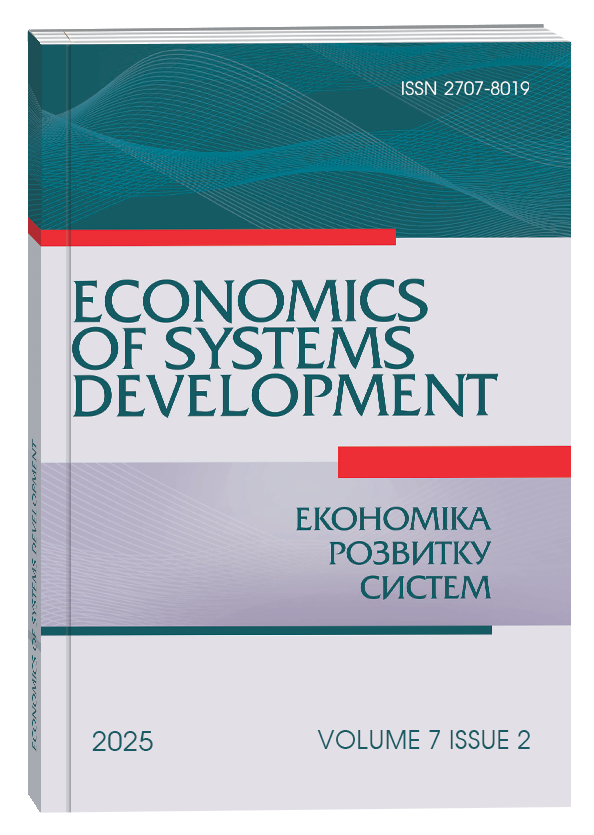TAX RISK MANAGEMENT MECHANISMS IN THE CONTEXT OF INCREASED TAX CONTROL AND AUTOMATIC EXCHANGE OF INFORMATION
Анотація
In the context of growing regulatory pressure and global tax transparency, this article investigates the conceptual foundations and practical mechanisms for integrating tax compliance into corporate risk appetite strategies. This research is relevant because tax legislation is increasingly complex, international initiatives such as BEPS, CRS and FATCA are becoming more prevalent, and automated tax information exchange frameworks are evolving. These changes necessitate a shift on the part of enterprises from reactive tax risk mitigation to proactive, systematised, and strategically aligned compliance models. The objective of the present study is twofold: firstly, to develop and substantiate an adaptive model for embedding tax compliance mechanisms into corporate governance systems; and secondly, to focus specifically on aligning such mechanisms with the company's accepted level of tax risk (risk appetite). The research methodology is based on systems theory, institutional analysis and predictive analytics and strategic modelling methods. The study puts forward a thorough, multi-level framework for accounting and analytical services, which it suggests should form the technological and organisational core of tax risk management. This architecture incorporates ERP-integrated modules, dashboards for key risk indicators (KRIs) and predictive artificial intelligence tools, which facilitate the ongoing identification, evaluation and management of tax risks. Rather than viewing tax compliance as merely a set of formal procedures or audit checks, the article conceptualises it as a strategic function embedded in all areas of corporate activity, ranging from market entry decisions and supply chain structuring to financial modelling and capital allocation. The proposed model highlights the importance of aligning external regulatory developments with internal decision-making frameworks in order to allow for the real-time recalibration of tax risk appetite. The institutional and cultural dimensions of the model are given key attention. It is demonstrated that the effectiveness of tax risk management depends not only on technical solutions, but also on organisational readiness, personnel awareness and internal motivation systems. The findings confirm that, today, tax risk management is a central element of sustainable corporate strategy, rather than an auxiliary accounting task. The developed model enables companies to mitigate regulatory uncertainty, increase transparency and bolster their competitive position within an increasingly open and regulated global business landscape.
Посилання
Kolisnyk O. P., Hurina N. V. (2024) The mechanism of tax consulting in the management of the tax component of economic security of the enterprise. Ekonomika rozvytku system – Economics of systems development, no. 6 (2), pp. 23–28. (in Ukrainian)
Kraievskyi V. M. & Muravskyi O. Yu. (2024) Tax compliance control and audit of transfer pricing transactions. Ekonomika rozvytku system – Economics of Systems Development, no 6 (1), pp. 37–45.
Kraievskyi V. M., Muravskyi O. Yu. (2023) Ryzykooriientovanyi pidkhid v systemi podatkovoho kontroliu za transfernym tsinoutvorenniam [Risk oriented approach in the system of tax control over transfer pricing]. Ukrainskyi ekonomichnyi chasopys – Ukrainian economic journal, no. 1, pp. 23–28. (in Ukrainian)
Tuchak T. V., Bohdan S. V. (2019) Kontseptualni zasady stanovlennia ta funktsionuvannia instytutu podatkovoho konsultuvannia [Conceptual foundations of the formation and functioning of the tax consulting institute]. Skhidna Yevropa: ekonomika, biznes ta upravlinnia – Eastern Europe: Economy, Business and Management, vol. 1 (18), pp. 312–316. (in Ukrainian)
Tytenko L. V., Bohdan S. V. (2019) Oblikovo-informatsiine zabezpechennia upravlinnia ryzykamy podatkovoho konsultuvannia [Accounting and information support for tax consulting risk management]. Ekonomika ta suspilstvo – Economy and society, no. 20, pp. 721–729. (in Ukrainian)


